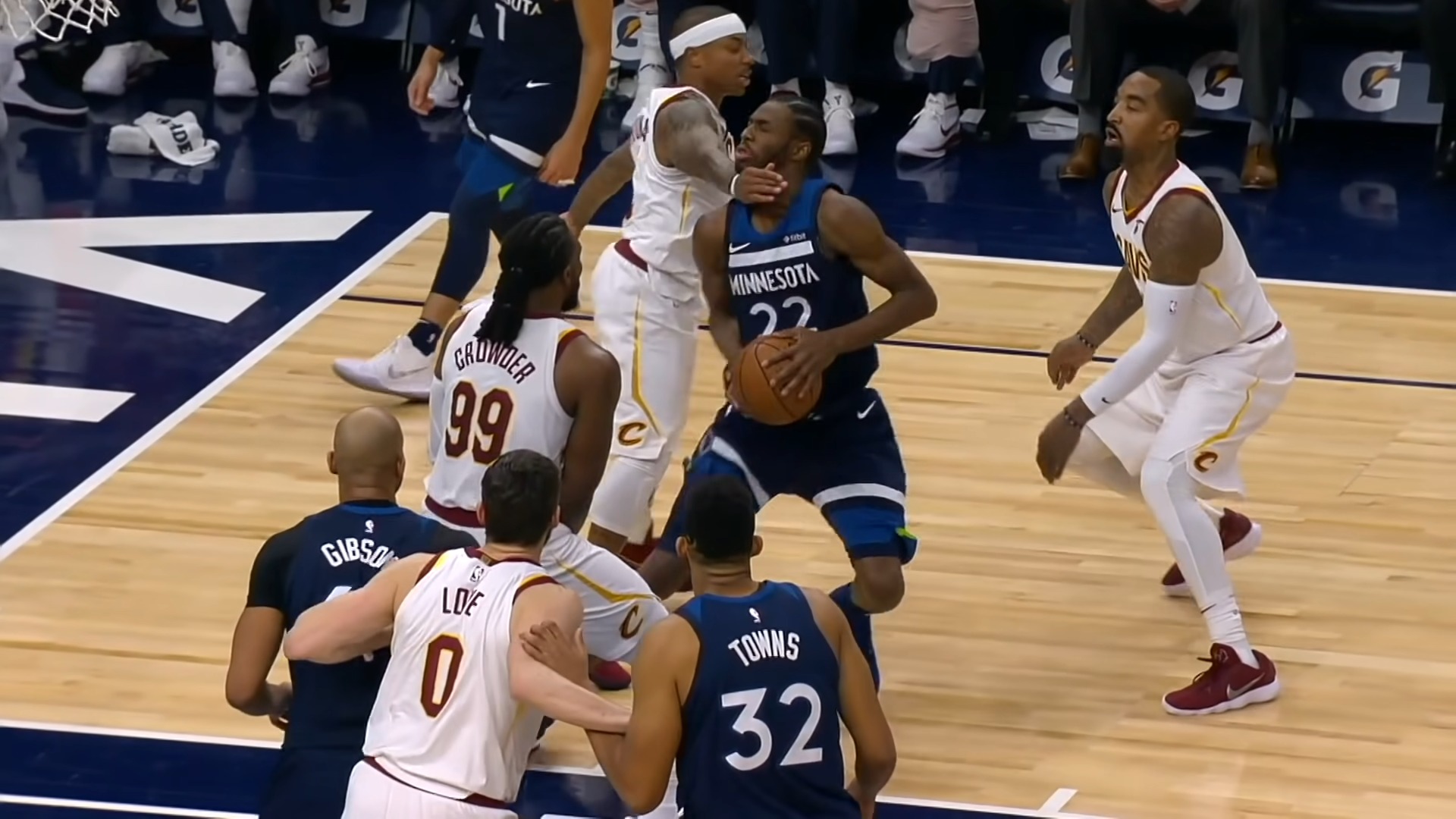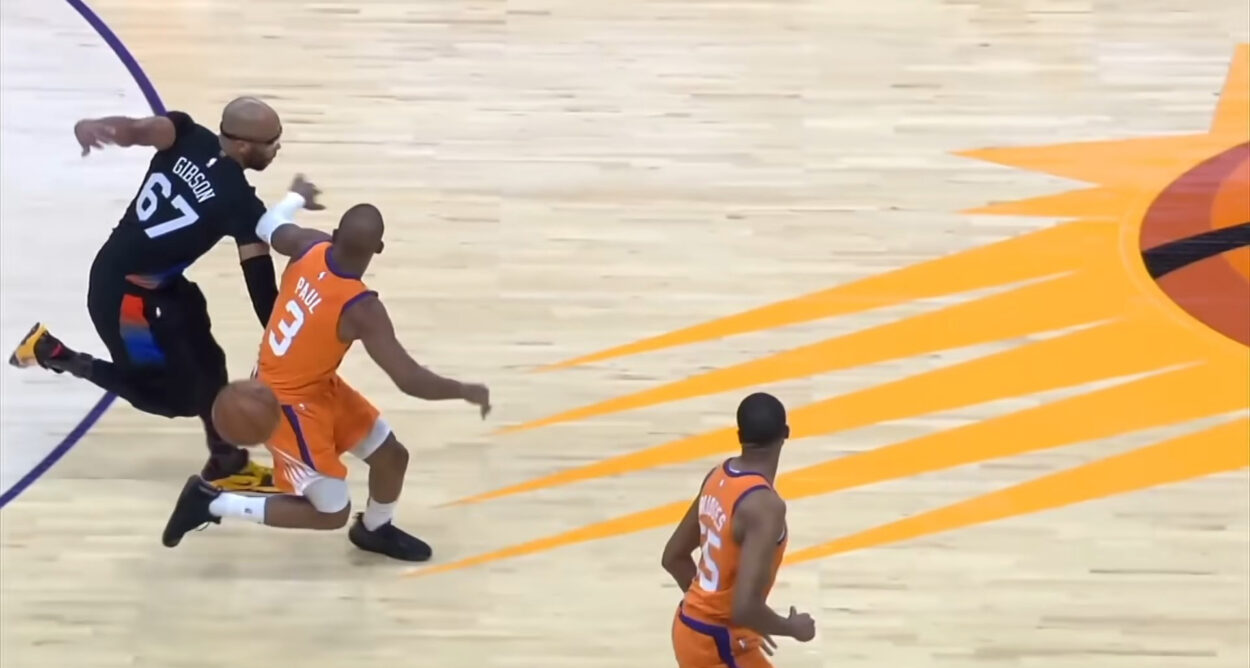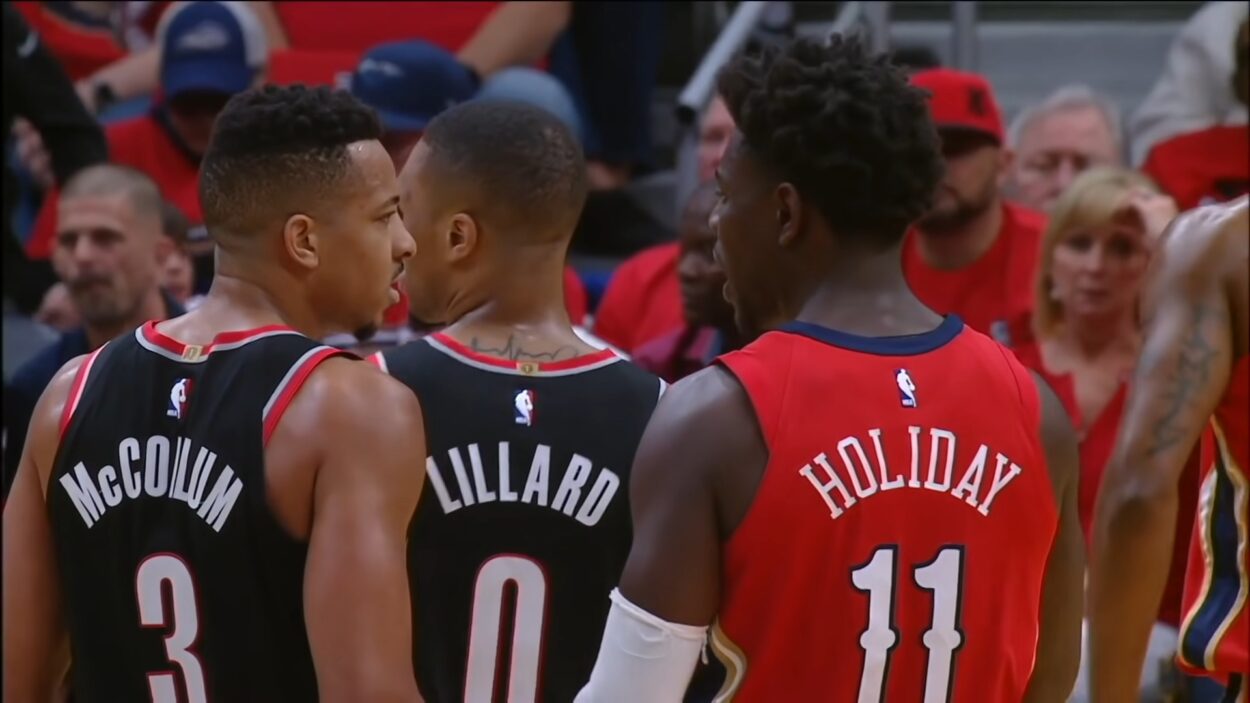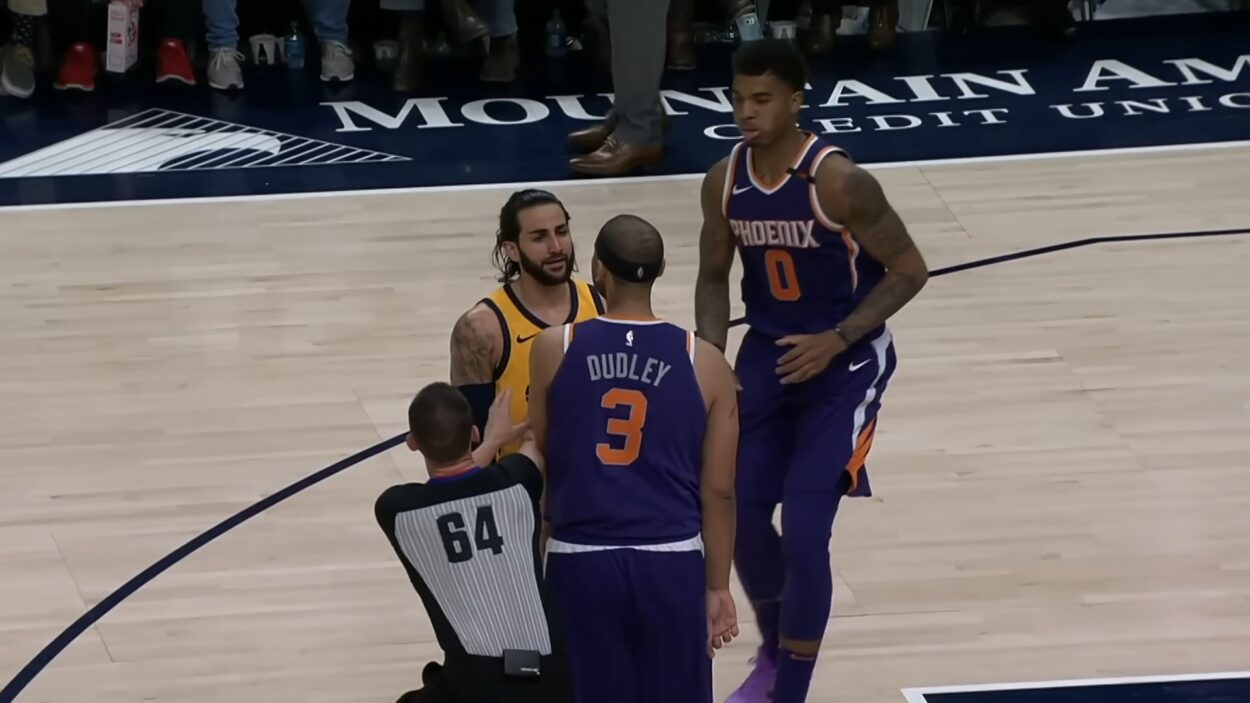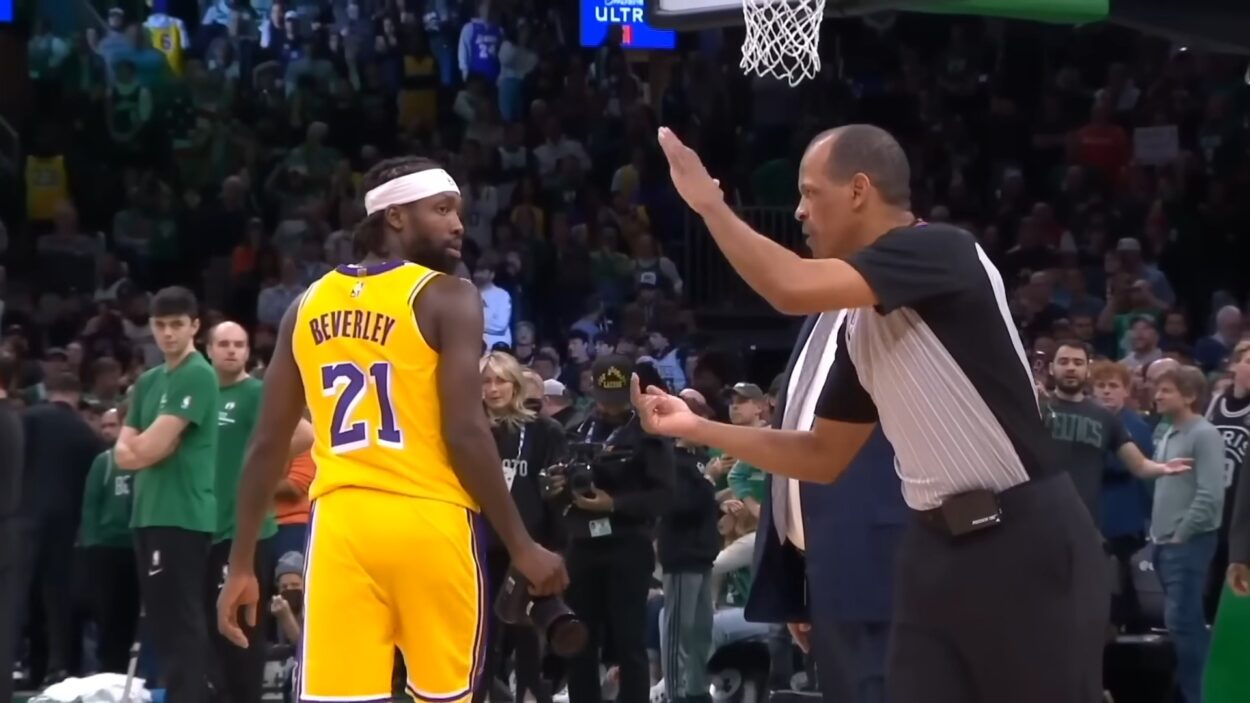Basketball is a game of agility, strategy, and a fair share of contact. While the essence of the game lies in scoring, the role of fouls is pivotal in maintaining the spirit and fairness of the game.
In the NBA, understanding fouls is crucial for players, coaches, and fans alike. This article delves deep into the intricacies of NBA fouls, unraveling their types, consequences, and the controversies surrounding them.
In the high-paced and physical world of NBA basketball, fouls serve as the regulatory mechanism ensuring fair play and sportsmanship. They are the unseen threads weaving through the fabric of every game, impacting strategies, player behavior, and ultimately, the outcome of the game.
The Essence of Fouls in NBA
Fouls in the NBA are common, given the competitive and physical nature of the game. They occur when a player makes illegal contact or exhibits unsportsmanlike conduct, whether intentional or unintentional, against an opposing player during a play.
The referees, who are among the best in the world, are responsible for making the call on fouls, ensuring better judgment and experience in officiating the games. The occurrence of fouls is not always straightforward.
There are instances where fouls are committed but aren’t called by the referee, and conversely, instances where fouls are called where no actual contact is made. These situations have resulted in some of the most controversial calls in NBA history, sparking debates and discussions among fans, players, and experts.
Types of Fouls
In the NBA, fouls are categorized based on the nature and severity of the infraction. Understanding these categories is crucial for grasping the impact of fouls on the game and the repercussions for the players involved.
-
- Personal Fouls:
- Definition: Occurs when a player makes illegal physical contact with an opponent.
- Implication: Affects the outcome of the play and may lead to free throws for the opposing team.
- Example: Pushing, holding, or striking an opponent during a play.
- Shooting Fouls:
- Definition: A type of personal foul that occurs when a player is in the act of shooting.
- Implication: Leads to free throws, the number of which depends on whether the shot was made.
- Example: Hitting the shooter’s arm while they are attempting to score.
- Flagrant Fouls:
- Definition: Severe fouls that involve excessive or violent contact and are intentional.
- Implication: Often results in ejections, suspensions, fines, and free throws for the opposing team.
- Example: Striking an opponent above the shoulders with no play on the ball.
- Technical Fouls:
- Definition: Represent violations of sportsmanship and professional conduct.
- Implication: Results in free throws for the opposing team and can lead to ejections.
- Example: Arguing with referees or taunting opponents.
- Loose Ball Fouls:
- Definition: Occurs when players are vying for possession and make illegal contact.
- Implication: Results in a change of possession or free throws if the team is in the bonus.
- Example: Pushing an opponent while both are pursuing a loose ball.
- Over-the-Back Fouls:
- Definition: Happen when a player makes illegal contact by reaching over the back of an opponent to attempt a rebound.
- Implication: Leads to free throws for the opposing team if they are in the bonus.
- Example: Jumping over an opponent’s back to grab a rebound.
Each of these fouls has distinct implications and consequences, influencing the game’s flow and emphasizing the importance of understanding the rules and maintaining sportsmanship in basketball.
- Personal Fouls:
Getting More into Personal Fouls
The Dynamics of Defensive and Offensive Fouls
Defensive and offensive fouls are the two subcategories of personal fouls. They occur when defensive and offensive players, respectively, commit illegal contact during a play, impacting the possession and flow of the game.
A defensive foul occurs when illegal contact is made by a defensive player toward an offensive player. If the offensive player is fouled in the act of shooting, they are awarded free throw attempts, the number of which depends on the field goal attempted.
If the shot is made during the illegal contact, the basket counts, and an additional free throw attempt is awarded. Conversely, an offensive foul occurs when the offensive player makes illegal contact with the defense during their possession.
This results in the offensive team losing possession of the ball. No free throws are awarded for offensive fouls, making them a crucial aspect of game strategy, especially in close contests.
Implications of Double Fouls
Double fouls are a unique and rare occurrence in NBA games, where both players commit personal fouls against each other at the same time. Understanding the implications of double fouls is crucial for analyzing game situations where they occur.
In situations where a double foul is called, no free throws are awarded, and the team that had possession retains it. These fouls are critical in maintaining fairness in situations where both players are at fault, ensuring that neither team gains an undue advantage from the infraction.
The occurrence of double fouls can be pivotal in games, especially in close contests where every possession counts. They can alter the momentum of the game and have significant implications on the strategies deployed by the teams involved, making the understanding of their dynamics essential for fans and analysts.
The Severity of Flagrant Fouls
Distinction between Flagrant Foul 1 and 2
Flagrant fouls are categorized into two types based on their severity and intent. Grasping the distinction between Flagrant Foul 1 and 2 is vital for understanding the repercussions and the impact on the game.
Flagrant Foul 1 involves severe contact but is often deemed unintentional. The team that was fouled is awarded two penalty free throws and possession of the ball.
This type of foul is serious but does not warrant automatic ejection unless deemed necessary by the officials. In contrast, Flagrant Foul 2 is considered intentional and harmful.
It carries the same penalties as Flagrant Foul 1 but with the addition of the automatic ejection of the player who committed the foul. The severity and intent behind Flagrant Foul 2 make it one of the most sternly penalized infractions in the NBA.
Consequences of Flagrant Fouls
The consequences of flagrant fouls extend beyond the immediate game penalties. They have long-lasting impacts on the players involved and the teams, affecting their reputation and standing in the league.
Players committing flagrant fouls face not only the immediate penalties but also the scrutiny and judgment of fans, peers, and the league. The repercussions can include fines, suspensions, and a tarnished reputation, affecting the player’s career and the team’s image.
The occurrence of flagrant fouls can also alter the course of the game significantly, affecting the morale and momentum of the teams involved. The severity of these fouls makes them a focal point of discussions and analyses, highlighting the need for sportsmanship and fair play in the league.
Technical Fouls: A Look Beyond Physical Altercations
Technical fouls in the NBA spotlight a different facet of violations, emphasizing breaches in conduct that surpass mere physical interactions. They play a pivotal role in upholding the game’s integrity and mutual respect.
The Spectrum of Technical Fouls
The realm of technical fouls is vast, encompassing a range of misconducts such as disputes, unsporting actions, and disrespect towards game officials. A comprehensive understanding of these is fundamental to interpreting the behavioral norms within the NBA.
Technical fouls can be levied against:
- Players
- Coaches
- Team Staff
- Even spectators
They typically arise from actions like disputing decisions, unsporting behavior, using offensive language, engaging in scuffles, and exaggerating fouls. Each occurrence results in the opposing team gaining a free throw and possession, significantly influencing the game’s trajectory.
Accumulating technical fouls carries enduring repercussions. A player accruing 16 technical fouls during the regular season faces a one-game suspension, with subsequent suspensions following every additional pair of technical fouls.
The ramifications intensify during the playoffs, underscoring the necessity of maintaining discipline and self-control.
Multidimensional Impact of Technical Fouls
The repercussions of technical fouls are extensive, impacting the immediate gameplay and having enduring effects on the involved players and teams. Delving into their impact offers a glimpse into the behavioral intricacies of the NBA.
The immediate awarding of a free throw and possession can alter the game’s balance, particularly in closely contested matches. The mental impact on the involved players and their teams can be profound, influencing their subsequent performance and tactical approach.
Beyond immediate gameplay, technical fouls spotlight the behavioral elements of players and teams, shaping their public perception and intra-league relationships. The ensuing discussions and scrutiny emphasize the paramount importance of maintaining professionalism and sportsmanship within the NBA.
The Strategy of Avoiding Fouls
Defense is both an art and a strategic component in basketball. Mastering effective defense while steering clear of fouls is essential for teams to sustain control and prevent pivotal players from accruing fouls.
Striking a Balance: Aggression and Prudence
Achieving equilibrium between aggressive defense and prudent play is crucial in circumventing unwarranted fouls. This equilibrium is a strategic necessity, enabling teams to exert pressure without jeopardizing their tactical plans.
Aggressive defense can hinder the opposing team’s offensive rhythm, inducing turnovers and missed opportunities. However, excessive aggression can result in fouls, offering the opposition chances to score from the line and potentially placing pivotal defenders in jeopardy due to accumulated fouls.
On the flip side, a prudent approach reduces foul risks but might grant the opposition more leeway and scoring prospects. Continual strategic recalibrations are essential, contingent on game dynamics, opponents, and officiating tendencies.
The Ripple Effect of Defensive Fouls on Teams
Defensive fouls resonate deeply within team dynamics and game flow. Comprehending this resonance is vital for dissecting the strategic recalibrations teams undergo in response to foul scenarios.
Defensive fouls can disrupt the game’s tempo, granting the opposition easy scoring opportunities and a chance to reorganize offensively. The accrual of team fouls, leading to bonus free throws, introduces an additional strategic layer, influencing the team’s defensive stance.
The accumulation of fouls by key defenders necessitates strategic substitutions and alterations, potentially impacting defensive proficiency and team cohesion. Managing defensive fouls strategically is a game-critical aspect, shaping the decisions and adaptations of the coaching cadre.
The Ongoing Dialogues and Disputes Over NBA Fouls
Debates Surrounding Calls and Non-Calls
NBA controversies predominantly orbit around referees’ decisions and oversights, underscoring the daunting and pressure-laden task of officiating elite basketball. Controversial adjudications, where seemingly unwarranted fouls are called, fuel debates regarding refereeing precision and consistency.
Such instances often breed frustration and queries about refereeing’s influence on game results among players, coaches, and fans. Conversely, contentious oversights, where apparent violations go unpunished, are equally debated.
Perceived officiating inconsistencies propel discussions on the necessity for advanced review mechanisms, technological aids, and enhanced training to bolster referees in rendering fair and accurate judgments.
The Progressive Refinement of Foul Regulations and Officiating
The persistent controversies and discussions have been instrumental in the progressive refinement of foul regulations and officiating methodologies in the NBA. Scrutinizing this progression reveals the league’s endeavors to uphold game fairness and integrity.
The NBA is in a constant state of evaluation and refinement of its foul regulations to mitigate officiating ambiguities and concerns. The inception of novel rules and amendments to existing ones mirror the league’s adaptability to evolving game dynamics and stakeholder feedback.
Technological advancements and the incorporation of review systems have augmented the support framework for referees in decision-making. The ongoing development and training initiatives for referees are aimed at enhancing officiating reliability and consistency, alleviating controversies, and sustaining the basketball community’s trust and respect.
Final Words
In the world of NBA basketball, fouls are more than just infractions; they are the invisible hand guiding fair play and sportsmanship. Understanding the nuances of fouls, from personal fouls to technical fouls, is essential for anyone passionate about the game.
These rules and their interpretations spark debates, shape strategies, and sometimes even change the course of a match. As the NBA continues to refine its regulations and officiating, the dialogue surrounding fouls remains an integral part of the sport, a testament to its enduring legacy and ever-evolving nature.
So, whether you’re a player, coach, or avid fan, remember that fouls are not merely interruptions but an integral part of the beautiful game of basketball.

